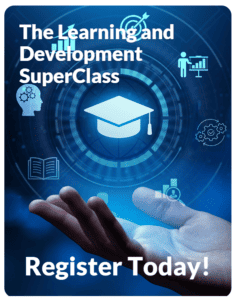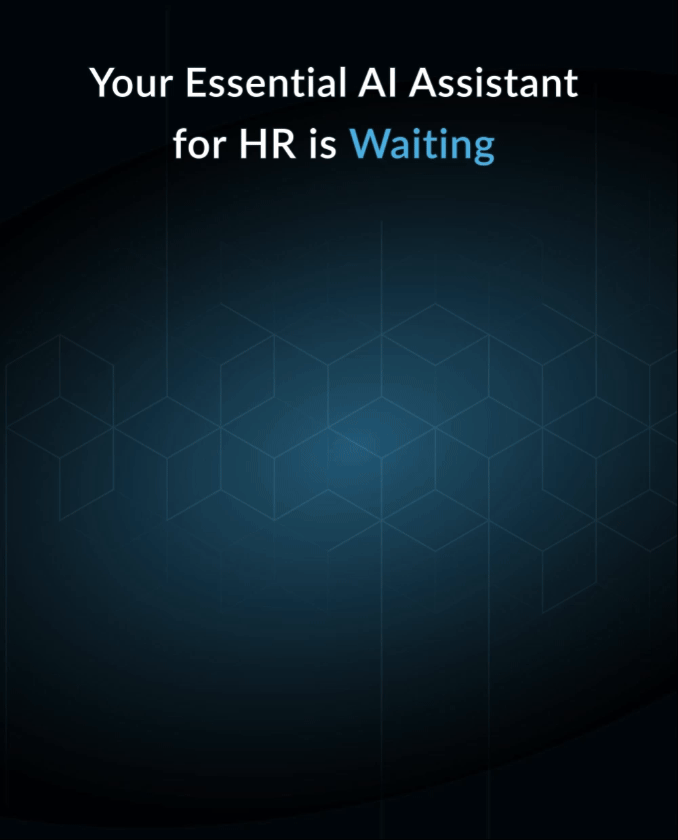Introducing The Learning & Development SuperClass
The corporate training industry is a $340 billion market, challenging every company to worry about onboarding, upskilling, management development, and training on hundreds of technologies and business processes. This has led to a marketplace filled with tools, platforms, courses, content, and consultants.
How do you, the HR and L&D leader, manage all this stuff? How do you build an L&D organization that builds and delivers world-class training yet also aligns with the continuous business transformations in the company? What should be centralized and what should be localized? How do you organize your content, delivery, and technology stack?
These issues have been a core of our research for 25 years, leading to our High-Impact Learning Organization model and dozens of frameworks and tools to help L&D teams stay aligned.
Well we’ve finally put all this important information into a SuperClass in The Josh Bersin Academy. Our new L&D SuperClass will take you through a real-life L&D department in Arrow Electronics and teach you how to deal with each one of these issues. How do we organize the team? How do we improve and implement or technology stack? How do we build a skills taxonomy? How do we partner with the business? And how do we build high-impact learning in the flow of work?
We’ve taken decades of our research and consulting and put it into this 6-8 hour course, taught over a period of six weeks. You will go through the program in a cohort of 40-60 people, so you’ll get to learn and collaborate with your peers – and you’ll walk away with many of our tools, models, and frameworks for your own team.
I promise you this will give you new perspectives, insights, and ideas on how to further improve and optimize your L&D organization. The first session starts on November 8, please join us! This program is part of the entire curriculum of the JBA, which you can purchase for only $495 a year. It’s the best deal in corporate learning you’ll find anywhere!
Over the past few years, businesses have experienced significant changes brought on by digitization, evolving customer expectations, industry transformation, and talent scarcity. As companies deal with these challenges, Learning Development has become an urgent priority to build internal talent pipelines efficiently and effectively.
Employees, managers, and leaders are being forced to learn more often and in new ways. These realities are pushing L&D organizations to move faster than ever. In this SuperClass, you will learn how to design and implement an agile L&D operating model by working through an immersive simulation for a fictional North American pharmaceutical chain, Arrow Care. You will take a data-driven approach to delivering the initiative based on The Josh Bersin Company Definitive Guide to Corporate Learning.?
The simulation will cover all aspects of a corporate Learning & Development operating model by seeking to align Arrow Care learners’ needs, company financials, organizational goals, and individual departments’ strategic agendas.?
As a learner, you will take on the role of a Josh Bersin Company consultant and help Arrow Care identify the strategic choices they need to make, help them assess the tradeoffs of their options, and make recommendations for them to consider. You will receive guidance and support from Josh Bersin Company consultants along the way.?
Key Questions You’ll Explore in this Program:
- What are the key considerations when drafting an L&D vision statement?
- What are the benefits and challenges of different L&D operating models?
- How do you structure learning content using the universal learning content taxonomy?
- What are the benefits of a content-based governance model?
- What is a learning cost model and how do you choose one?
- How do you evaluate learning intake requests to help scope L&D workforce demand planning?
- What are learning modalities and how do you choose them for a program?
- How do an organization’s accessibility policy and quality assurance process affect learner experience?
- How does a well-organized L&D tech stack elevate learner experience?
- Why is institutionalizing innovation important to improve learning outcomes?
- What are core L&D metrics and who owns learning measurement?
The Learning and Development SuperClass is made up of eight Field Manuals (our version of an online module). Each contains various types of content and social exercises culminating in a mini-project, reflection, or action. Each Field Manual takes between 30-45 minutes to complete, but you can jump on and off at your own pace, as often as you’d like. Deeper learning happens in the discussions with your fellow learners, so be sure to regularly check in on the conversations with your cohort.
Field Manuals (Course Modules)
FM#1: Learning Strategy & Vision
Understanding the challenges L&D faces today and the project at hand will instantly immerse you in this simulation. This Field Manual provides an overview of Arrow Care’s current L&D landscape and business operations. You will partner with Arrow Care’s stakeholders to create a vision statement and define the future of Arrow Care’s L&D Organization.
Key Questions Posed by this Field Manual:
- What are the changes the corporate learning market faces today?
- Who are the key stakeholders in Arrow Care’s L&D Organization?
- Why is a vision statement important?
- What are the key considerations to draft a vision Statement?
FM#2: Learning & Development Organizational Structures
This Field Manual introduces you to the three common Learning & Development organizational structures and the challenges Arrow Care’s L&D Organization faces in transitioning to a new org structure.
Key Questions Posed by this Field Manual:
- What are the three common organizational structures?
- What are the benefits and challenges of the three organizational structures?
- How do you manage stakeholder needs to help transition to a new organizational structure?
FM#3: Learning Content Taxonomy
A learning content taxonomy classifies content and helps organize team activities. This Field Manual explores a universal learning content taxonomy and its applications. It offers an opportunity to define learning content types, create a taxonomy, and understand a content-based governance model.
Key Questions Posed by this Field Manual:
- What is a universal learning content taxonomy?
- In what ways does a content taxonomy help structure learning content?
- How do you map content to categories to a content taxonomy?
- What are the benefits of a content-based governance model?
FM#4: Learning Cost Model
There are several types of Learning Cost Models and they each offer a series of choices. In this Field Manual, you will determine Arrow Care’s optimal cost model and funding options. You’ll consider how to build flexibility in the L&D team and balance the needs of the organization with the demands of the different areas of the business.
Key Questions Posed by this Field Manual:
- What is a learning cost model?
- How do you choose a cost model?
- How to apply the Choices In/Choices Out model?
FM#5: Learning Solutions
Scoping learning demand in an organization is critical to managing the intake requests effectively and choosing the right solution for the business challenge at hand. In this Field Manual, you will examine how learning is scoped from intake request, to design, and all the way through governance.
Key Questions Posed by this Field Manual:
- What is the intake process and how does it help scope the L&D demand?
- How do you evaluate intake requests?
- What are learning modalities?
- How do you choose learning modalities for a program?
- Why is a centralized governance process for intakes important?
FM#6: Learning Operations & Services
In this Field Manual, you will gain an understanding of how work transitions from learning solutions teams to learning services teams within an L&D organization. You will also work through accessibility concerns, quality assurance processes, and program inventory challenges.
Key Questions Posed by this Field Manual:
- How do Learning Solutions and Learning Services work together?
- Why do organizations need to centralize learning operations?
- How do an organization’s accessibility policy and quality assurance process affect learners’ experience?
- What is program inventory?
FM#7: Learning Technology
In this Field Manual, you will examine how to select the right learning technology architecture for Arrow Care’s unique needs. Through this process, you will define a governance process to encourage innovation and improve learning outcomes.
Key Questions Posed by this Field Manual:
- How does a well-organized tech stack elevate learner experience?
- How do you create a system architecture view and a learner experience view?
- Why is technology governance key to addressing business needs?
- Why is institutionalizing innovation important to improving learning outcomes?
FM#8: Learning Measurement
Many organizations still experience a significant gap in their learning measurement process. This Field Manual covers how learning measurement uses data to build capacity for an L&D function.
 Key Questions Posed by this Field Manual:
Key Questions Posed by this Field Manual:
- How do you define measurement standards?
- What are the standard measurement metrics?
- What is a learning measurement dashboard?
- Who owns the internal metrics?
- What are the three phases of establishing metrics communication standards?
